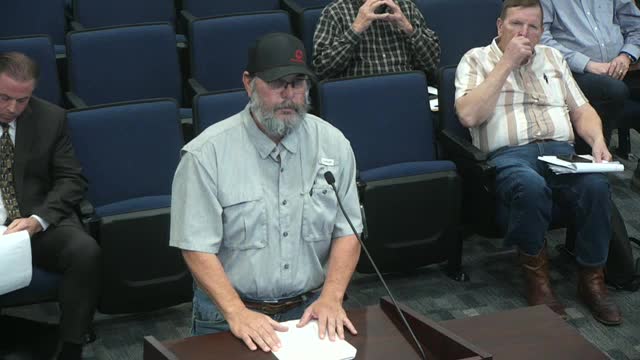City Council reviews new development plans for Stone Creek Estates amid public concerns
March 17, 2025 | Rockwall City, Rockwall County, Texas
This article was created by AI summarizing key points discussed. AI makes mistakes, so for full details and context, please refer to the video of the full meeting. Please report any errors so we can fix them. Report an error »

In the heart of Rockwall, Texas, the City Council convened on March 17, 2025, to address pressing community concerns surrounding new residential developments. As the meeting unfolded, residents voiced their apprehensions about the impact of growth on their neighborhoods, particularly regarding the proposed density of new housing projects.
One resident, a contractor, expressed his worries about the influx of homes in an area characterized by older, spacious properties. He highlighted the need for maintaining the tranquility of the neighborhood, especially for elderly residents who rely on the peace and quiet of their surroundings. “We’ve got a little slice of heaven where we’re at,” he remarked, emphasizing the importance of preserving the community's character amidst inevitable growth.
The discussion shifted to the role of Homeowners Associations (HOAs) in new developments. A speaker suggested that future regulations should ensure that HOAs are not handed over to homeowners until a significant portion of lots are sold. This would provide necessary funding for maintaining common areas, which often suffer when there are few residents contributing to the HOA. The speaker recounted his own experience with an HOA that struggled financially due to a lack of homeowners, advocating for a more structured approach to HOA management in new developments.
Council members engaged in a detailed dialogue about the proposed septic systems for the new housing areas. The city’s current regulations stipulate that lots must be at least one and a half acres for septic systems, but exceptions can be made. A developer explained that the decision to use on-site sewage facilities (OSSFs) instead of city sewer was driven by the need to reduce density and avoid costly infrastructure upgrades. The developer noted that the plan had already reduced the number of lots by 79, aiming for larger, more spacious properties that align with community feedback.
As the meeting progressed, council members and residents alike grappled with the balance between development and maintaining the unique charm of Rockwall. The developer assured attendees that the new plan would prioritize larger lots, aiming to create a high-end community distinct from surrounding neighborhoods. However, concerns lingered about the potential for overcrowding and the aesthetic appeal of the proposed layouts.
In closing, the council acknowledged the complexities of urban growth and the need for careful planning that respects both the desires of current residents and the demands of future development. As Rockwall continues to evolve, the discussions from this meeting will undoubtedly shape the city’s landscape for years to come, leaving residents to ponder how best to preserve their community's essence amidst change.
One resident, a contractor, expressed his worries about the influx of homes in an area characterized by older, spacious properties. He highlighted the need for maintaining the tranquility of the neighborhood, especially for elderly residents who rely on the peace and quiet of their surroundings. “We’ve got a little slice of heaven where we’re at,” he remarked, emphasizing the importance of preserving the community's character amidst inevitable growth.
The discussion shifted to the role of Homeowners Associations (HOAs) in new developments. A speaker suggested that future regulations should ensure that HOAs are not handed over to homeowners until a significant portion of lots are sold. This would provide necessary funding for maintaining common areas, which often suffer when there are few residents contributing to the HOA. The speaker recounted his own experience with an HOA that struggled financially due to a lack of homeowners, advocating for a more structured approach to HOA management in new developments.
Council members engaged in a detailed dialogue about the proposed septic systems for the new housing areas. The city’s current regulations stipulate that lots must be at least one and a half acres for septic systems, but exceptions can be made. A developer explained that the decision to use on-site sewage facilities (OSSFs) instead of city sewer was driven by the need to reduce density and avoid costly infrastructure upgrades. The developer noted that the plan had already reduced the number of lots by 79, aiming for larger, more spacious properties that align with community feedback.
As the meeting progressed, council members and residents alike grappled with the balance between development and maintaining the unique charm of Rockwall. The developer assured attendees that the new plan would prioritize larger lots, aiming to create a high-end community distinct from surrounding neighborhoods. However, concerns lingered about the potential for overcrowding and the aesthetic appeal of the proposed layouts.
In closing, the council acknowledged the complexities of urban growth and the need for careful planning that respects both the desires of current residents and the demands of future development. As Rockwall continues to evolve, the discussions from this meeting will undoubtedly shape the city’s landscape for years to come, leaving residents to ponder how best to preserve their community's essence amidst change.
View full meeting
This article is based on a recent meeting—watch the full video and explore the complete transcript for deeper insights into the discussion.
View full meeting
